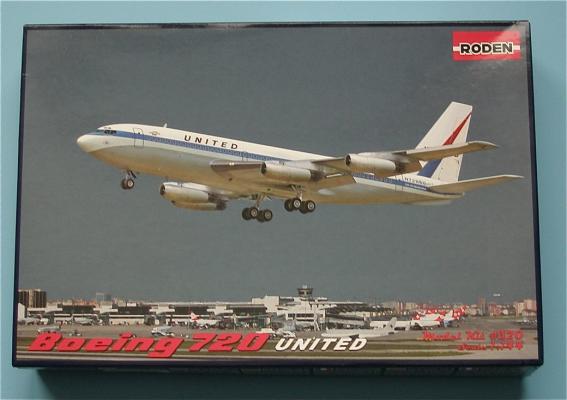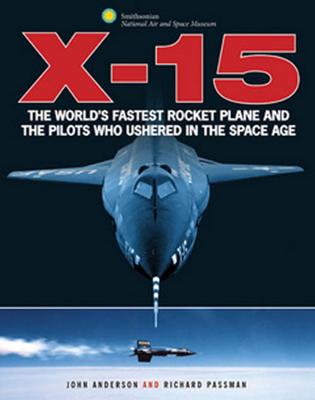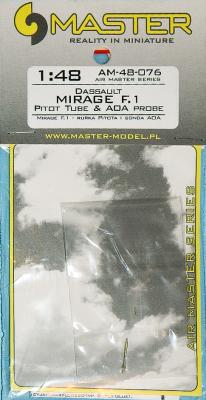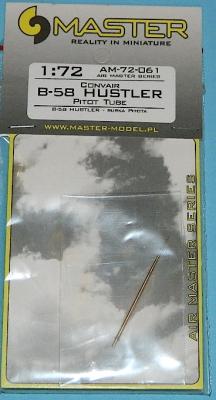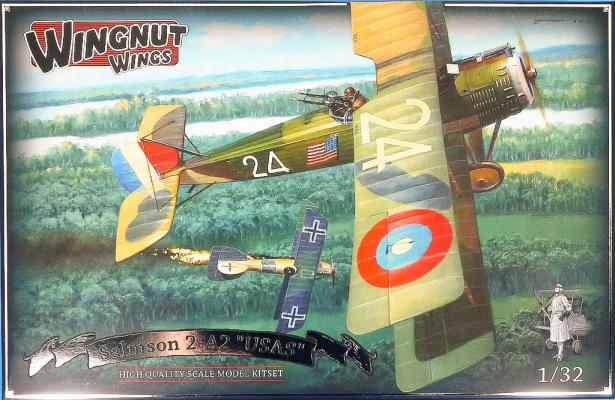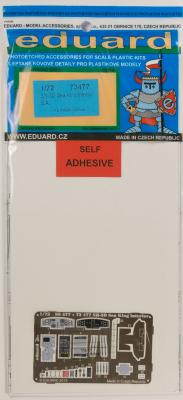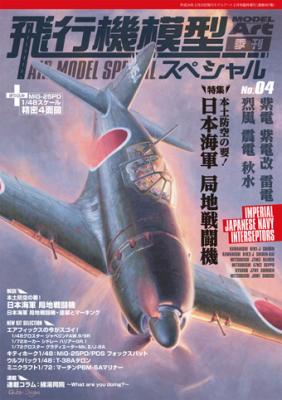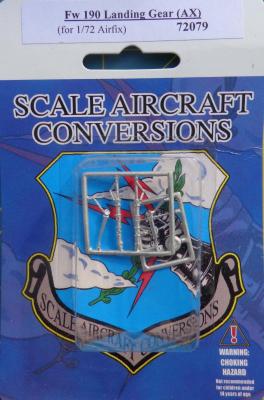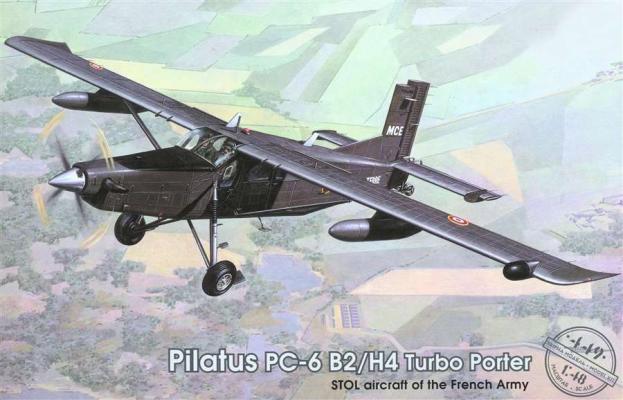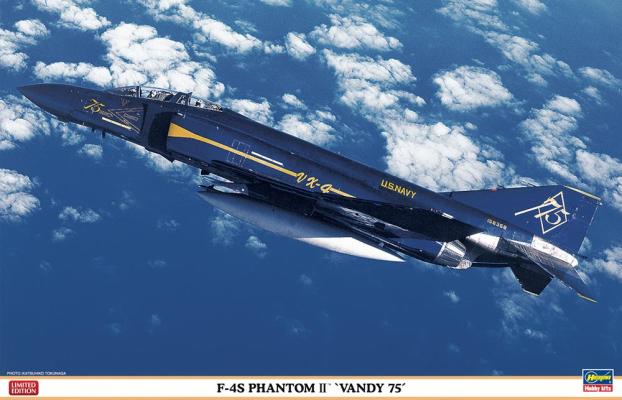Originally developed as an intermediate-range version of Boeing’s highly successful 707, the 720’s fuselage was shorter by 7 feet 9 inches. A reduced fuel capacity enabled a lighter structure, and with aerodynamic improvements in the form of full-span leading-edge flaps, the aircraft was actually a bit more operationally versatile than the 707, except in range. With an original designation of 707-020, the aircraft was externally similar to the 707-120, so in order to eliminate confusion, Boeing renamed it the 720, and it stands as the only airliner in the “Seven Series” not to end with the numeral seven. Demand for the reduced-capacity aircraft was lukewarm at best, so Boeing only produced 154 720’s (and the improved follow-on 720B’s). The mainstream model manufacturers have largely ignored the type. Roden’s Boeing 720 is a welcome addition to the 1/144 scale airliner enthusiasts’ collections because it fills a void.
Much has been written about the world's most successful rocket powered research aircraft, the X-15. This airplane was designed to be a vehicle to provide aerodynamic, flight dynamic and structural data for use in the future development of hypersonic aircraft, all before anyone had even broken Mach 3. In October, 1954, NACA decided on the need for a manned hypersonic research vehicle, one that would fly up to Mach 7 and over 126,000 feet in altitude. By the end of the program the X-15 had reached a top speed of Mach 6.7 and an altitude of 347,800 feet during the course of 199 flights.
The authors; John Anderson, curator of aerodynamics at the Smithsonian National Air and Space Museum and Richard Passman, chief aerodynamicist on the Bell X-2 have crafted an excellent introductory story for this aircraft.
Basically, they do this by explaining the X-15 and how it worked, then going into details of the twelve pilots who flew this machine. The six chapters are:
Another in a long line of excellent turned metal (brass) items from Master Model. IPMS/USA sincerely appreciates the Master Model’s support in providing a world-class product to improve our models… THANK YOU!
I am always fascinated by the level of detail these parts have on them. My only experience with turning metal is best left unsaid, however these probes are almost as close to perfect as they can be.
This package contains two metal parts in a double-bag system. The outer bag holds the protective card with details on the contents, and then an internal “small” bag holds the even smaller pitot and AOA (Angle of Attack) probes.
Another excellent turned metal (brass) pitot assembly from Master Model. IPMS USA sincerely appreciates the support of Master Model, who continue to provide first-class products to improve already great models…. THANK YOU!
This one is as simple as it gets; a pitot tube combined with the Pitot Boom which fits on the nose of the Italeri 1/72 B-58 Hustler. Looking at the kit item and Master Model’s replacement, it is easy to see why you should buy this one. First, the kit item is really way too short; Master Model fixes that. Use superglue or epoxy to install, the fit is perfect and doesn’t need anything else. There is an excellent instruction sheet as well, other aftermarket companies should follow this lead.
Background
First entering service in October of 1917 with French forces, the Salmson 2-A2 was enthusiastically received by its crews as a rugged and dependable improvement over earlier designs. It soon entered service with the United States Air Service in June of 1918. In its brief service with the American Expeditionary Force (AEF), a reported 705 examples of the 2-A2 were delivered, although they saw limited combat duties, and went on to serve with the occupational forces in Germany following World War I. The 2-A2 continued to serve with French forces until 1921, and saw further limited service with Russian, Czechoslovakian, Belgian, and Japanese forces. The Japanese version was built under license as the Japanese Type Otsu 1 Reconnaissance Aircraft through 1933.
Introduction
The Sikorsky Sea King helicopter was developed in the late 1950s for the US Navy’s growing anti-submarine warfare role. Becoming operational in 1961, the Sea King would serve with the US Navy until 2006, and continues in service with other operators to this day. Over its lifetime, the Sea King would spawn multiple variants and revisions. This included versions to meet USAF and USCG roles, such as the well known HH-3E Jolly Green Giant combat search-and-rescue helicopters. Additionally, licensed-built versions of the Sea King were made by Mitsubishi, Agusta, and Westland. The British-built Westland Sea King variants differ in quite a few points from the Sikorsky-built Sea Kings, and are the basis for Cyber-Hobby’s 1/72 Sea King kits.
This is one of Model Art Modeling Magazine special editions. The text is mainly in Japanese with some English subtitles throughout. One feature of these magazines is the high quality of the photographs and the models.
Model Art has done it again. Back in April 2013 they released "Air War Over Vietnam U.S. Navy Aircraft Part 1". This is the third followup and they have made some changes to the layout from the excellent first issue.
The magazine is laid out in several sections. The sections consist of mostly Japanese writing, but there is some English captions and wonderful color photographs.
The first couple pages consist of new releases that will soon hit the market and a New Kit Selection article. It features three of Airfix's new tool kits, the 1/48 Gloster Javelin FAW.9/9R, 1/72 Gloster J-8A /Gladiator Mk. II and 1/72 Hawker Siddeley Harrier GR.1.
First off I’d like to thank Scale Aircraft Conversions for making this detail set available for review and thank IMPS/USA for allowing me to do the review.
Most of us are familiar with the Focke-Wulf Fw 190. But, for the one or two who are wondering what an Fw190 is, the following synopsis is provided. During World War II the Fw 190 was a German single-seat fighter aircraft powered by a single radial engine. It and its sister aircraft, the Bf109, made up the majority of the Luftwaffe’s fighter aircraft. The Fw190 is arguably the best fighter Germany had in its inventory. It was used in a variety of rolls including day fighter, night fighter, fighter-bomber, and ground-attack aircraft. It was very popular with the Luftwaffe pilots. And so it is with today’s modelers. At any show you will see a number of Fw190s on the table vying for recognition. One way to make your model look as crisp and sharp as possible is through the use of after-market parts.
Our thanks up front to Squadron mail order for providing this kit to IPMS so we can review it! A note about Squadron’s customer service; had one small issue with a part sprue, and we received the parts ASAP. Thanks Squadron for your attention and drive to ensure you maintain your customer base! And thanks to IPMS leadership for sending this one my way
The Turbo-Porter is an interesting aircraft; it is designed for a specialized purpose, operating from unprepared airfields, with short takeoff and landing capabilities. In this kit, markings are provided for French Air Force operations; one overall white with a cheatline, and one in overall dark gray. I used Tamiya IJN Saesebo arsenal gray for my build as it seems close.
The Hasegawa F-4 Series Phantom II models have been a standard for the modeling community for a number of years. They have offered virtually every variant ever produced and flown in all services around the world. This specific release is Celebrating the dawn of carrier landings. On January 18, 1911, the first successful aircraft landing on a ship occurred when pilot Eugene Ely landed his plane onto the USS Pennsylvania (ACR-4). In 1986, Air Test and Evaluation Squadron Four (VX-4) celebrated the 75th anniversary of this historic occasion by adding special "Vandy 75" insignia to select F-4S Phantom IIs.

